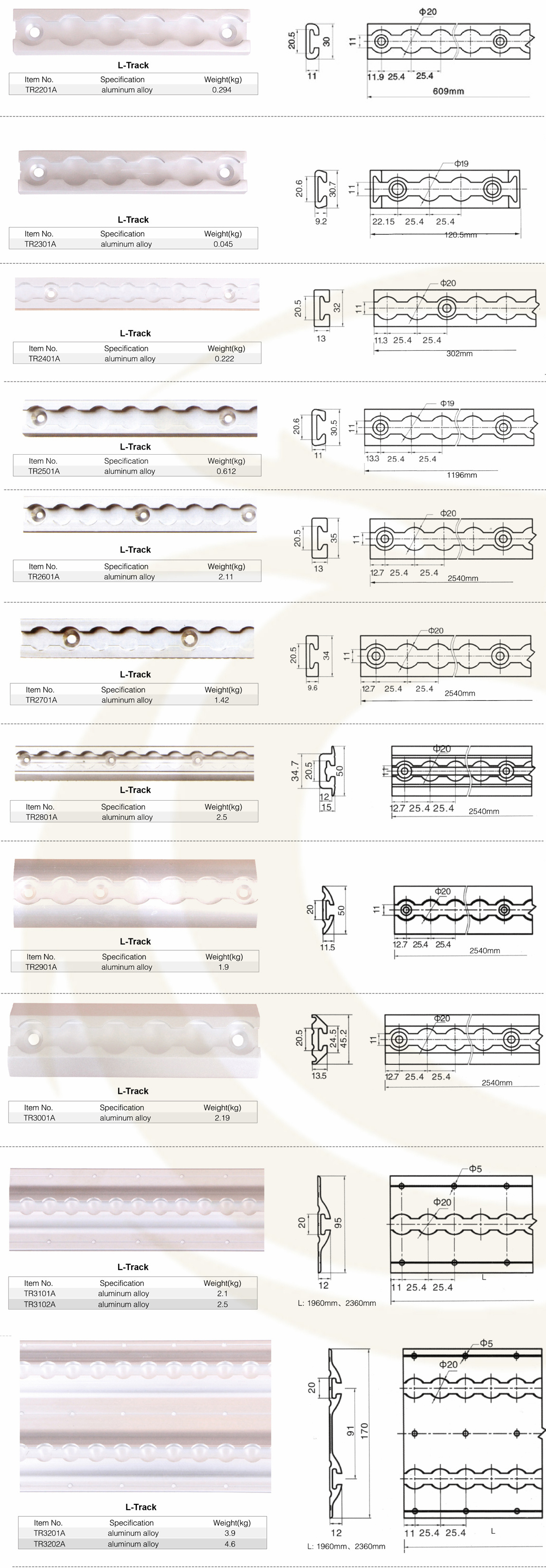The Differences and Advantages of E Track and L Track
When it comes to securing cargo during transportation, having the right equipment is crucial. Two popular options for cargo restraint systems are E track and L track. While both are effective in their own ways, they have their own set of differences and advantages. In this article, we will explore these differences and advantages to help you make an informed decision.
E track is a horizontal track system that is commonly used in trailers, trucks, and vans. It consists of a series of slots that are mounted on the walls or floor of the vehicle. These slots allow for the attachment of various types of cargo control accessories such as tie-down straps, rope, or hooks. One of the major advantages of E track is its versatility. It provides multiple anchor points along the length of the track, allowing for flexibility in securing different sizes and shapes of cargo. This makes it an ideal choice for transporting a variety of goods, from small packages to larger items such as furniture or appliances.
L track, on the other hand, is a vertical track system that is typically used inside cargo vans or on the floor of trailers. It features a continuous track that runs along the walls or floor, with a series of small rectangular openings. Similar to E track, L track also provides several anchor points for securing cargo. However, the main difference between the two is the orientation of the tracks. While E track is horizontal, L track is vertical. This vertical orientation offers its own advantages. For instance, L track allows for more flexibility in securing cargo at different heights. It also provides a sleek and unobtrusive design, making it ideal for applications where space is limited or aesthetics are important.
When it comes to installation, E track and L track both have their own unique requirements. E track is typically bolted or welded onto the walls or floor of a vehicle, while L track is usually screwed or riveted into place. The installation process for both systems can be done by professionals or experienced DIY enthusiasts. However, it is important to note that improper installation can compromise the effectiveness of the tracks and put the cargo at risk.
In terms of compatibility with accessories, E track and L track are generally interchangeable. Many cargo control accessories, such as tie-down straps or hooks, are designed to be used with both systems. This interchangeability allows for greater flexibility and convenience, as it means that existing accessories can be used with either track system, reducing the need for additional purchases.
In conclusion, both E track and L track offer effective solutions for securing cargo during transportation. E track provides versatility and a wide range of anchor points, while L track offers flexibility in securing cargo at different heights and a sleek design. The choice between the two ultimately depends on the specific requirements of your cargo and the vehicle in which it will be transported. Whichever track system you choose, proper installation and compatible accessories are essential for ensuring the safety and security of your cargo.
Post time: Sep-21-2023


